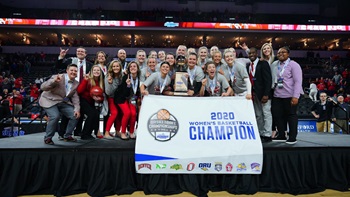USD part of Bush Foundation 40 million investment to transform teacher-preparation programs
In addition, the institutions are guaranteeing the effectiveness of teachers who graduate from their redesigned programs. To accomplish this goal, the institutions will transform how they recruit, prepare, place and support new teachers and how they work with their K-12 partners.
The Foundation plans to invest more than $40 million over the next decade in the 14 universities and in related activities to support their success. The institutions working in partnership with the Bush Foundation are:
|
Augsburg College* |
North Dakota State University** |
|
Bethel University* |
St. Catherine University* |
|
Concordia University, St. Paul* |
St. Cloud State University |
|
Hamline University* |
University of St. Thomas* |
|
Minnesota State University, Mankato |
The University of South Dakota |
|
University of Minnesota Minnesota State University Moorhead** |
Valley City State University** Winona State University |
|
|
|
|
*As part of the Twin Cities Teacher Collaborative **As part of the North Dakota and Minnesota Partnership |
|
“Over nine months, these universities and colleges participated in a rigorous planning process during which they completed detailed proposals for redesigning their teacher-preparation programs,” said Susan Heegaard, vice president and educational achievement team leader for the Bush Foundation. “In each case, the universities are taking a bold, courageous stance in guaranteeing the effectiveness of the teachers they train.” According to Heegaard, the Foundation’s investment will enable the partner institutions to develop and implement their redesigned programs, starting with the 2010-11 academic year.
“Our nation's ability to lead in the global arena hinges upon how well we educate our youth, and that effort depends largely on the strength of our teachers,” said Dr. Judith A. Ramaley, president of Winona State University. “Regional universities are the backbone of education. With these resources, we can drive teacher preparation to a new level.”
Each institution will launch a unique strategy that plays to the institution’s strengths, while challenging the status quo to ensure the teachers they prepare will be highly effective. Innovative concepts include targeted recruiting of high-caliber students representing diverse groups, integration of co-teaching strategies, creation of residency programs to provide teacher candidates with full-year immersion experiences, deep partnerships with K-12 school districts and ongoing support to new teachers through in-person and online mentoring programs.
“We are excited and honored to participate in supporting this vision of re-imagining teacher preparation by harnessing the collective effort of many higher-education institutions,” said Dr. Linda Hanson, president of Hamline University, which is part of the Twin Cities Teacher Collaborative comprised of six private higher-education institutions. “To truly transform how teachers are trained requires greater collaboration and commitment than we've ever experienced.”
“As part of their agreement with the Bush Foundation, each of the schools has agreed to guarantee that its program will produce effective teachers,” Heegaard added. “The key to the guarantee is that they each will partner with the K-12 schools where their graduates will teach, and each university will provide continued support to the teachers for several years after graduation. This type of guarantee has never been offered before that we know of.”
Heegaard noted that delivering on that guarantee will require the universities to act on four fronts—recruiting those most likely to succeed as effective teachers, training them to be effective instructors, placing them in schools led by administrators who will support them in those first critical years in the classroom and then providing new teachers with ongoing support.
“It’s critical that we support all efforts to effectively train our teachers,” said Dr. Rick Melmer, dean of the School of Education at The University of South Dakota. “By creating this program through the Bush Foundation, it shows that we are not just committed to improving the quality of our teachers, but it also demonstrates an investment in the future of our state’s education system.”
Peter C. Hutchinson, Bush Foundation president, noted that this initiative is a critical part of achieving the Foundation’s goal over the next 10 years of increasing by 50 percent the number of students in Minnesota, North Dakota and South Dakota, from pre-kindergarten through college who are on track to earn a degree after high school, and of eliminating disparities among diverse student groups.
“Research has shown that while many factors play a role in educational success, effective teaching makes a bigger difference than any other in-school variable,” Hutchinson said. “Research also shows that when students consistently experience effective teaching, there are no achievement gaps. By forming partnerships with institutions who are willing to ensure that children across these three states will have effective teachers, we believe that over the decade we can significantly raise the achievement of every student and reduce disparities among student groups.”
According to University of Minnesota President Dr. Robert H. Bruininks, “Ensuring that our schools have the best teachers in the country is critical to meeting the region's employment needs going forward. In order to be competitive in the global economy, all students need to graduate from high school prepared for some form of post-secondary education. I am very excited that the University of Minnesota will play a strong role in revamping the teacher-education curriculum to improve teaching and learning — for all students — throughout the state and region.”
To support the work of its education partners, the Bush Foundation also is working with the Value-Added Research Center (University of Wisconsin-Madison) to develop assessment tools and reporting mechanisms that teachers, schools and higher-education institutions can use to measure effectiveness and improve performance.
The Foundation’s efforts to increase educational achievement are part of its strategic Goals for a Decade, launched in 2008, which also includes work to develop courageous leaders and engage entire communities in problem-solving and to support the self-determination of the 23 Native nations that share geography with Minnesota, North Dakota and South Dakota.For more information on this initiative, refer to our Teacher Effectiveness Initiative page.


